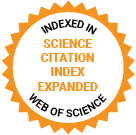Journal of Medical Internet Research
The leading peer-reviewed journal for digital medicine and health and health care in the internet age.
Editor-in-Chief:
Gunther Eysenbach, MD, MPH, FACMI, Founding Editor and Publisher; Adjunct Professor, School of Health Information Science, University of Victoria, Canada
Impact Factor 5.8 CiteScore 14.4
Recent Articles

The global demographic shift towards longer life expectancy and complex health needs is increasing the number of people with chronic diseases, placing pressure on health and care systems. With the digitalization of healthcare, digital Health Literacy (dHL), or the use of digital skills in health, is gaining importance. It involves navigating digital health information, using digital tools effectively, and making informed health decisions. Measuring dHL can help identify gaps and develop strategies to improve dHL and health, ensuring citizens equal opportunity to participate in a digital healthcare system. The European project “The Improving Digital Empowerment for Active and Healthy Living (IDEAHL)” with the objective to empower European Union citizens to use digital instruments to take a more active role in managing their health and well-being creates the base for this overview

Artificial intelligence (AI) has potential in promoting and supporting self-management in patients with chronic conditions. However, the development and application of current AI technologies to meet patients’ needs and improve their performance in chronic condition self-management tasks remain poorly understood. It is crucial to gather comprehensive information to guide the development and selection of effective AI solutions tailored for self-management in patients with chronic conditions.

Despite the increasing approval of antiamyloid antibodies for Alzheimer disease (AD), their clinical relevance and risk-benefit profile remain uncertain. The heterogeneity of AD and the limited availability of long-term clinical data make it difficult to establish a clear rationale for selecting one treatment over another.

An intelligence-enabled clinical decision support system (CDSS) is a computerized system that integrates medical knowledge, patient data, and clinical guidelines to assist health care providers make clinical decisions. Research studies have shown that CDSS utilization rates have not met expectations. Clinicians’ intentions and their attitudes determine the use and promotion of CDSS in clinical practice.

Due to its high incidence, prostate cancer (PC) imposes a burden on Western societies. Individualized treatment decision for nonmetastatic PC (eg, surgery, radiation, focal therapy, active surveillance, watchful waiting) is challenging. The range of options might make affected persons seek peer-to-peer counseling. Besides traditional face-to-face support groups (F2FGs), online support groups (OSGs) became important, especially during COVID-19.

The prevalence of mental health difficulties among young people has risen in recent years, with 75% of mental disorders emerging before the age of 24 years. The identification and treatment of mental health issues earlier in life improves later-life outcomes. The COVID-19 pandemic spurred the growth of digital mental health interventions (DMHIs), which offer accessible support. However, young people of different ethnicities face barriers to DMHIs, such as socioeconomic disadvantage and cultural stigma.

Chronic obstructive pulmonary disease (COPD) is a progressive respiratory condition characterized by persistent airflow obstruction. Pulmonary rehabilitation (PR) is a cornerstone of COPD management but remains underutilized due to barriers such as low motivation and accessibility issues. Virtual reality (VR)–complemented PR offers a novel approach to overcoming these barriers by enhancing patient engagement and rehabilitation outcomes.

Stroke is a leading cause of long-term disability, often resulting in upper extremity dysfunction. Traditional rehabilitation methods often face challenges such as limited patient access to resources and lack of sustained motivation. Home-based virtual reality (VR) training is gaining traction as an innovative, sustainable, and interactive alternative. However, the effect of home-based VR, specifically for upper extremity recovery in patients with stroke, remains insufficiently explored.

Due to the complicated nature of Parkinson disease (PD), a number of subjective considerations (eg, staging schemes, clinical assessment tools, or questionnaires) on how best to assess clinical deficits and monitor clinical progression have been published; however, none of these considerations include a comprehensive, objective assessment of all functional areas of neurocognition affected by PD (eg, motor, memory, speech, language, executive function, autonomic function, sensory function, behavior, and sleep). This paper highlights the increasing use of digital health technology (eg, smartphones, tablets, and wearable devices) for the classification, staging, and monitoring of PD. Furthermore, this Viewpoint proposes a foundation for a new staging schema that builds from multiple clinically implemented scales (eg, Hoehn and Yahr Scale and Berg Balance Scale) for ease and homogeneity, while also implementing digital health technology to expand current staging protocols. This proposed staging system foundation aims to provide an objective, symptom-specific assessment of all functional areas of neurocognition via inherent device capabilities (eg, device sensors and human-device interactions). As individuals with PD may manifest different symptoms at different times across the spectrum of neurocognition, the modernization of assessments that include objective, symptom-specific monitoring is imperative for providing personalized medicine and maintaining individual quality of life.
Preprints Open for Peer-Review
Open Peer Review Period:
-


















